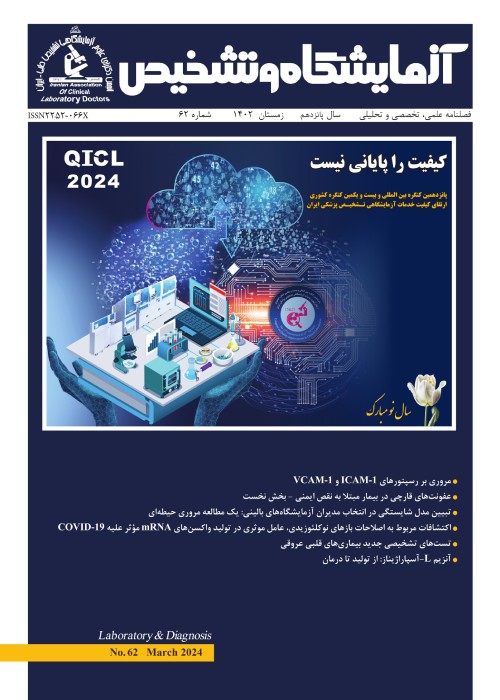Histopathology of Fungal Infections (Mold Infections)
Author(s):
Abstract:
Aspergillus colonization of nasal sinuses, bronchiectatic cavities or old tubercular or fungal cavities is relatively common. In the aggressive, invasive form of pulmonary aspergillosis, widespread blood vessel invasion, thrombomycotic vascular occlusions, hemorrhagic and coagulative necrosis are characteristic, and extrapulmonary hematogenous dissemination is not uncommon. Because neutropenia is usually present in aggressive invasive aspergillosis, coagulative necrosis and hemorrhage are the dominant histologic findings. Multiple, nodular infarcts, either pale or hemorrhagic, and laminated, intravascular thrombi are seen in lung. In histologic sections, large numbers of hyphae fill blood vessel lumina, invade vascular walls and extend through necrotic lung parenchyma. The hyphae of Aspergillus have parallel walls, measure 3-6 µm in diameter, are septate, and have dichotomous branching. The morphologic features of these hyphae, however, are not specific for Aspergillus spp., other fungi, particularly Pseudallescheria boydii and Fusarium sll., cannot be definitively distinguished by morphologic characteristics alone. The Zygomycetes have a propensity to invade blood vessels, frequently causing arterial or venous thromboses and subsequent ischemic or hemorrhagic infarction. Invasive pulmonary zygomycosis, which histologically resembles invasive pulmonary aspergillosis, is commonly associated with hematopoietic malignancies, particularly patients with neutropenia. Zygomycete hyphae are easily visualized in H&E and Papanicolaou stains, but often stain weakly by the GMS method. Characteristic hyphae are broad, thin-walled, pleomorphic, irregular branching, 5-20 µm in diameter, and frequently twisted, folded, wrinkled or collapsed. The histopathology of fusariosis is virtually identical to that of rhe aggressive form of invasive aspergillosis. Blood vessel invasion and infarcts with accompanying coagulative necrosis and hemorrhage are common. Hyphae of fusarium spp. In tissue measure 3-8 µm in diameter, have septa, and are similar to aspergillus. A useful, but not pathognomonic clue to the identity of Fusarium spp. Is the presence of constrictions at the site of septa, hyphal varicosities, and terminal or intercalated vesicles. Pseudallescheria boydii also may produce a fungus ball resembling a pulmonary aspergilloma, and invasive pseudallescheriasis mimics invasive aspergillosis, with nosular infarcts secondary to angioinvasion by the fungus and necrotizing pneumonitis with abscesses in non-granulocytopenic hosts. In tissue, the septate hyphae of P. boydii are difficult to distinguish from those of aspergilla, although they are somewhat narrower, measuring 2-5 µm in width, and their pattern of branching is more random. Chromoblastomycosis is characterized by marked hyperkeratosis, parakeratosis and pseudoepitheliomatous hyperplasia that, like cutaneous blastomycosis, paracoccidioidomycosis and coccidioidomycosis, may be misdiagnosed as squamous cell carcinoma. Whitin the dermis, one sses epithelioid and giant cell histiocyte proliferation with foci of neutrophil rich microabscesses. Fungal elements are most commonly found within dermal macrophages and mainly consist of sclerotic bodies or muriform cells 5-12 µm in diameter.
Language:
Persian
Published:
فصلنامه آزمایشگاه و تشخیص, Volume:4 Issue: 17, 2012
Page:
25
magiran.com/p1480898
دانلود و مطالعه متن این مقاله با یکی از روشهای زیر امکان پذیر است:
اشتراک شخصی
با عضویت و پرداخت آنلاین حق اشتراک یکساله به مبلغ 1,390,000ريال میتوانید 70 عنوان مطلب دانلود کنید!
اشتراک سازمانی
به کتابخانه دانشگاه یا محل کار خود پیشنهاد کنید تا اشتراک سازمانی این پایگاه را برای دسترسی نامحدود همه کاربران به متن مطالب تهیه نمایند!
توجه!
- حق عضویت دریافتی صرف حمایت از نشریات عضو و نگهداری، تکمیل و توسعه مگیران میشود.
- پرداخت حق اشتراک و دانلود مقالات اجازه بازنشر آن در سایر رسانههای چاپی و دیجیتال را به کاربر نمیدهد.
In order to view content subscription is required
Personal subscription
Subscribe magiran.com for 70 € euros via PayPal and download 70 articles during a year.
Organization subscription
Please contact us to subscribe your university or library for unlimited access!


